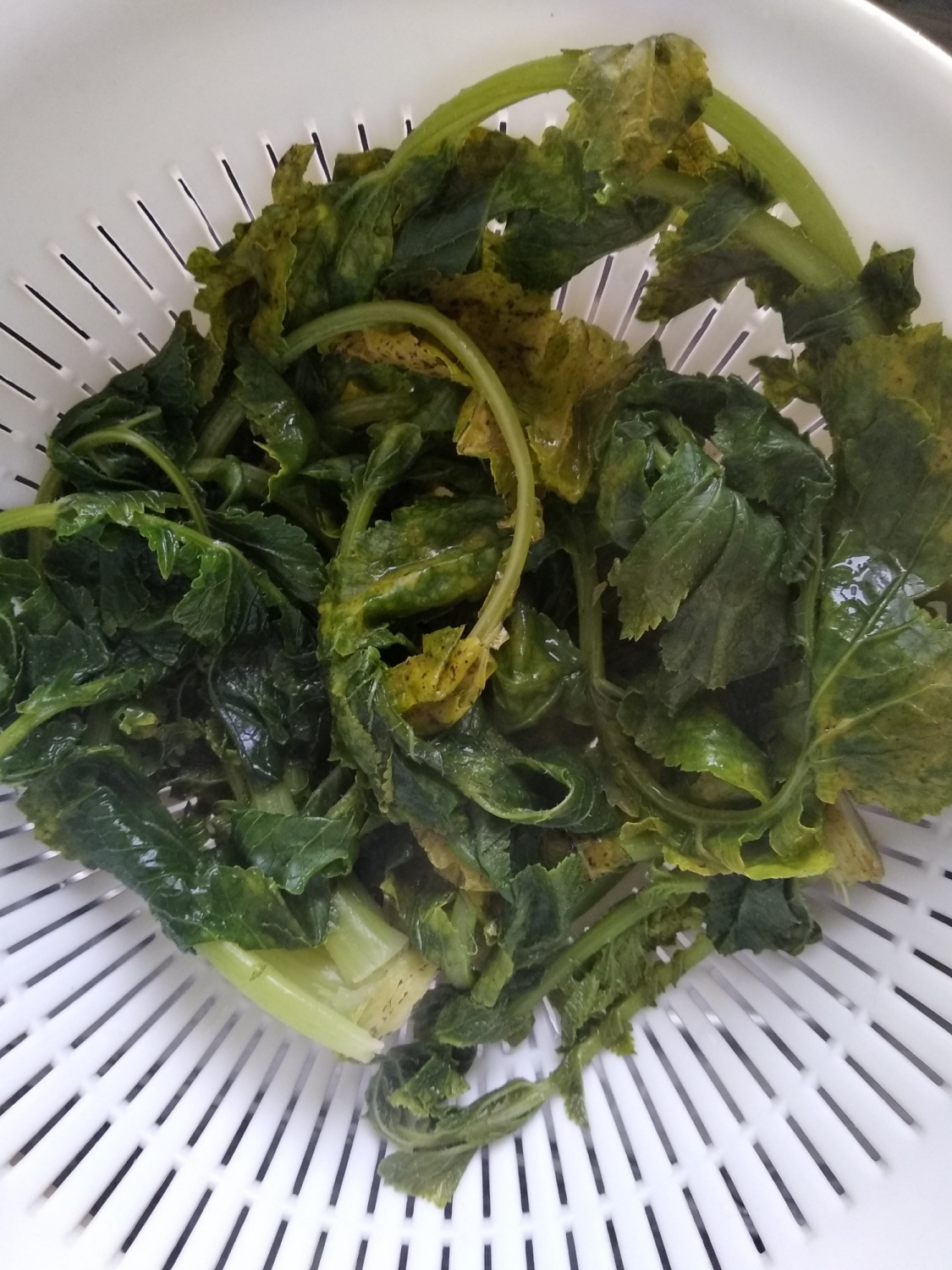Making Dried Radish Greens (Sirage)
How to Make Delicious Dried Radish Greens Easily in a Rice Cooker

Try making tender, homemade dried radish greens using fresh radish leaves! Unlike dried sirage, these have a wonderfully soft and moist texture that doesn’t require prolonged soaking. They are incredibly versatile and perfect for dishes like soybean paste stew (doenjang jjigae), pork and potato stew (gamjatang), or seasoned side dishes (namul muchim).
Ingredients- 3 large radish greens (if using smaller ones, use more)
- 2 Tbsp coarse sea salt
- Water (enough to cover the greens)
Cooking Instructions
Step 1
From the radishes you bought at the market, we’ll be using the green leafy tops, known as ‘mucheong’. These can often be quite long, so trim them near the base of the radish root. This recipe uses the greens from 3 radishes.

Step 2
Wash the radish leaves thoroughly. Pay close attention to the inner parts of the leaves and the stems, as they can trap a lot of dirt. Rinse them multiple times under running water to ensure they are completely clean.

Step 3
Place the cleaned radish greens into your rice cooker. Add enough water to fully submerge them. Stir in 2 tablespoons of coarse sea salt. (Tip: Adding salt while boiling helps maintain a vibrant green color. Since you’ll rinse them later, it’s okay to make the boiling water slightly saltier than you prefer.)

Step 4
Select the ‘Steam’ or ‘Multi-Cook’ function on your rice cooker and cook for 20 minutes. To check if they are done, carefully take a small piece of a stem and taste it. If it’s tender and easy to chew, they are ready. If it’s still tough, close the lid and let them steam for a few more minutes; they will soften quickly.

Step 5
Once tender, remove the cooked radish greens from the rice cooker. Immediately rinse them under cold running water. This process helps cool them down and rinses away excess saltiness, preparing them for storage and cooking.

Step 6
Gently squeeze out as much water as possible from the cooled radish greens using your hands. Squeezing them well will significantly reduce their volume, bringing them down to about a handful size.

Step 7
Store the squeezed radish greens in airtight containers or resealable bags and freeze them. This makes it incredibly convenient to grab a portion whenever you want to use fresh sirage in your cooking.

Step 8
Your prepared sirage can be used in many delicious ways. Toss it with soybean paste (doenjang), sesame oil, and sesame seeds for a simple and tasty seasoned side dish. (3 radishes yield enough for one side dish serving). Alternatively, add it directly to your soybean paste stew for a hearty and flavorful sirage doenjang jjigae. (This amount is sufficient for about 3 servings of stew).

Step 9
For a delicious Sirage Doenjang Jjigae: Combine 1.5 Tbsp soybean paste, 0.5 Tbsp gochujang (Korean chili paste), 1 Tbsp dried anchovy powder, 1 Tbsp dried shrimp powder, 1 cubed potato, 1 cubed onion, and 3 sliced mushrooms in your rice cooker. Add 550ml of water and cook using the ‘Steam’ or ‘Multi-Cook’ function for 20 minutes. (If using a regular pot or electric kettle, simmer for about 10 minutes).




